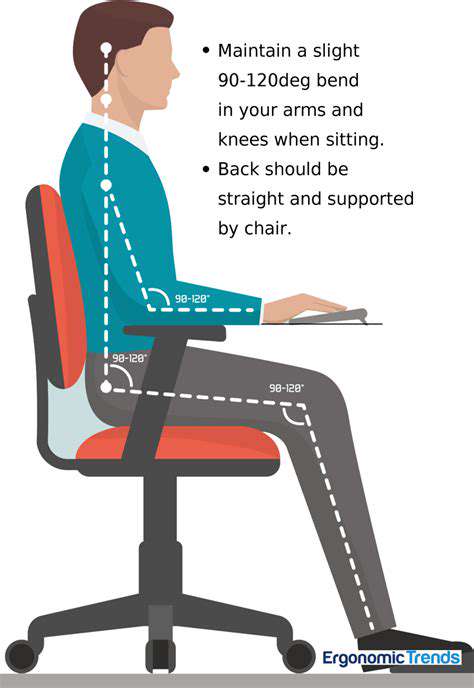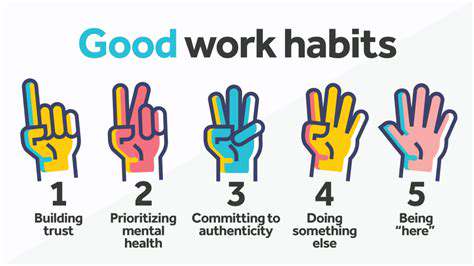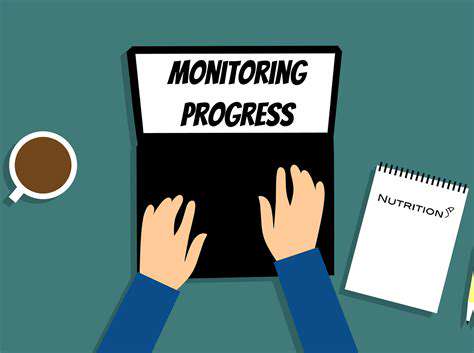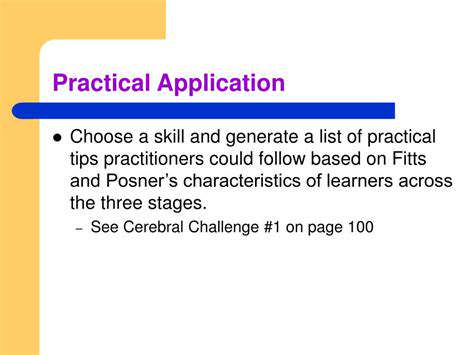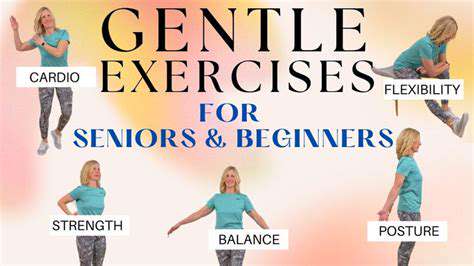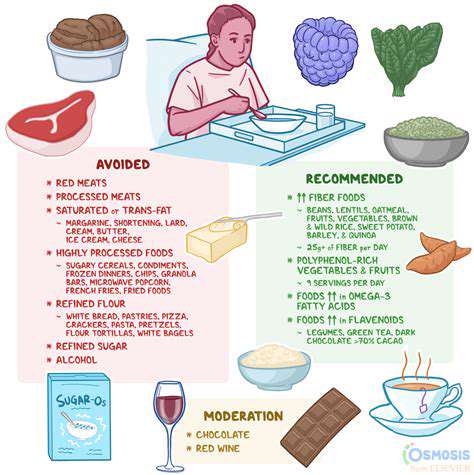Solutions for Alleviating Hand Pain
Identifying the Root Cause of Your Hand Aches
Understanding the Variety of Hand Aches
Hand aches can manifest in various ways, ranging from mild discomfort to severe throbbing pain. Understanding the specific nature of your hand pain, such as whether it's sharp, dull, burning, or achy, can significantly aid in pinpointing the underlying cause. This initial assessment helps in differentiating between potential issues, such as arthritis, carpal tunnel syndrome, or tendonitis, which often present with distinct pain characteristics.
Factors like the location of the pain (e.g., thumb, wrist, palm) and any accompanying symptoms (e.g., numbness, tingling, swelling) are also crucial. A careful self-assessment of these details can be a valuable first step in identifying the root cause of your discomfort.
The Role of Repetitive Motions
Repetitive motions, a common culprit behind hand aches, frequently occur in professions involving typing, assembly line work, or even playing musical instruments. These actions can lead to overuse injuries, such as tendonitis or carpal tunnel syndrome, where repeated strain on the tendons and nerves in the hand and wrist leads to inflammation and pain. Identifying which activities trigger your discomfort is essential for understanding whether repetitive motions are contributing to your hand aches.
Assessing Underlying Medical Conditions
Certain medical conditions, like arthritis, can cause chronic hand pain. Arthritis, encompassing various forms such as rheumatoid arthritis and osteoarthritis, involves inflammation of the joints, often resulting in stiffness, swelling, and aching, particularly in the hands and fingers. Consulting a medical professional is crucial for diagnosis and appropriate management if you suspect an underlying medical condition is contributing to your hand pain.
The Importance of Posture and Ergonomics
Poor posture and improper ergonomics while working or performing everyday tasks can also contribute to hand aches. Maintaining a neutral wrist position and using supportive equipment, such as ergonomic keyboards and mousepads, can prevent strain and discomfort. Analyzing your daily routines to identify posture-related factors can be very helpful in understanding the potential link between your work habits and hand pain.
Examining Nutritional Deficiencies and Lifestyle Factors
Certain nutritional deficiencies or lifestyle choices can indirectly affect hand health. For example, a lack of essential vitamins and minerals, such as calcium and vitamin D, can contribute to weakened bones and increased susceptibility to joint pain. Likewise, excessive caffeine or alcohol consumption can dehydrate the body, potentially exacerbating existing hand pain. Considering these potential factors during the diagnostic process can help in determining the overall cause of the hand pain.
Exploring Trauma and Injuries
Accidents, falls, or other forms of trauma can lead to immediate or delayed hand pain. Fractures, sprains, or dislocations can cause significant discomfort and require immediate medical attention. It's vital to document any incidents or injuries that may have preceded the onset of hand pain to help determine if trauma is a contributing factor to the discomfort.
The Significance of Regular Hand Exercises and Stretching
Regular hand exercises and stretching routines can help maintain flexibility and strength, reducing the risk of developing hand aches. Incorporating these simple exercises into your daily routine can promote better blood circulation and reduce tension in the hand and wrist, potentially alleviating existing pain. A consistent exercise routine can also help prevent future issues by improving the overall health and strength of the hand.
Lifestyle Modifications for Long-Term Hand Pain Management

Dietary Changes
Adopting a healthy diet is crucial for maintaining longevity. Prioritizing whole, unprocessed foods like fruits, vegetables, and lean proteins is essential. These foods are rich in vitamins, minerals, and fiber, promoting overall health and reducing the risk of chronic diseases. Limiting processed foods, sugary drinks, and excessive saturated and unhealthy fats is equally important for a long and healthy life. This dietary shift should be gradual and sustainable for long-term adherence.
Furthermore, paying attention to portion control is key. Consuming appropriate portions helps manage calorie intake and maintain a healthy weight, which are vital components of a long-term healthy lifestyle. Overeating can lead to various health issues and contribute to shorter lifespans. Understanding and practicing mindful eating habits can significantly impact your longevity journey.
Regular Physical Activity
Engaging in regular physical activity is a cornerstone of a long and healthy life. Exercise not only strengthens the cardiovascular system but also boosts mood, reduces stress, and improves cognitive function. Aim for at least 150 minutes of moderate-intensity aerobic exercise or 75 minutes of vigorous-intensity aerobic exercise per week, along with muscle-strengthening activities on two or more days a week. Finding activities you enjoy, such as dancing, swimming, or hiking, can make exercise more sustainable and enjoyable.
Incorporating movement into daily routines, like taking the stairs instead of the elevator or walking during breaks, can significantly increase physical activity levels. These small changes add up, contributing to overall health and well-being. Physical activity plays a vital role in maintaining a healthy weight and reducing the risk of chronic diseases, which are major factors in longevity.
Stress Management Techniques
Chronic stress can have detrimental effects on both physical and mental health, impacting longevity. Therefore, developing effective stress management techniques is crucial for a long and healthy life. Practicing mindfulness, meditation, or deep breathing exercises can help reduce stress levels and promote relaxation. These techniques can help manage stress responses, leading to better sleep quality, improved mood, and reduced risk of chronic illnesses.
Prioritizing sufficient sleep is also a critical aspect of stress management. Adequate sleep allows the body to recover and repair itself, reducing stress hormones and promoting overall well-being. Finding healthy ways to de-stress, such as spending time in nature, engaging in hobbies, or connecting with loved ones, can make a positive impact on stress levels and potentially increase longevity.
Social Connections and Support
Strong social connections and supportive relationships are vital for overall well-being and longevity. Maintaining meaningful relationships with family and friends provides emotional support, reduces feelings of isolation, and promotes a sense of belonging. This social interaction can buffer against stress, improve mental health, and potentially increase lifespan. Volunteering, joining clubs, or attending community events can help foster social connections and build a supportive network.
Having a strong support system is crucial during challenging times. A network of friends, family, or mentors can provide encouragement, guidance, and practical assistance when needed. This support can be invaluable in navigating life's ups and downs, contributing to a sense of resilience and promoting overall longevity. Nurturing these relationships can be an important component of a long and fulfilling life.
Seeking Professional Medical Advice and Intervention

Understanding the Importance of Seeking Professional Medical Advice
Seeking professional medical advice is crucial for maintaining good health and well-being. It's essential to recognize when a health concern warrants the attention of a qualified healthcare professional. Ignoring potential issues can lead to delayed diagnosis and treatment, potentially worsening the condition and impacting overall health outcomes. Proper medical evaluation and guidance are vital for accurate diagnosis and effective management of various health problems.
Proactive engagement with healthcare providers allows for early detection of potential health risks. This proactive approach can lead to timely interventions and prevent the progression of conditions, thus contributing significantly to better health management.
Identifying When Professional Medical Advice is Needed
Identifying the need for professional medical advice often depends on the nature and severity of the symptoms. Persistent or worsening symptoms, such as fever, pain, or unusual fatigue, should trigger a consultation with a healthcare provider. Changes in your medical history, including recent injuries or illnesses, should also prompt a visit to a doctor. Any unusual or concerning bodily changes, such as skin lesions, lumps, or unexplained bleeding, should be evaluated by a medical professional.
Unfamiliar or persistent discomfort, especially if accompanied by other symptoms, necessitates a medical evaluation. If you have any doubts about your health, it's always best to consult a doctor to receive proper guidance and treatment.
The Benefits of Seeking Professional Medical Advice
Seeking professional medical advice offers numerous benefits, including accurate diagnosis, personalized treatment plans, and improved health outcomes. A qualified healthcare professional can provide expert knowledge and insight into your specific health concerns, leading to more effective and targeted interventions. This personalized approach ensures that the treatment plan is tailored to your individual needs and medical history, maximizing the potential for positive results.
Early intervention, facilitated by professional medical advice, can prevent the progression of conditions and minimize potential complications. This proactive approach is key to maintaining overall well-being and preventing further health problems.
Different Types of Medical Professionals
There are various medical professionals available to provide advice and care, each specializing in different areas of medicine. General practitioners (GPs) are primary care physicians who can address a wide range of health concerns. Specialists, such as cardiologists, dermatologists, and neurologists, focus on specific medical disciplines, providing specialized care for particular conditions.
Understanding the different types of medical professionals available and their respective areas of expertise is important in choosing the right healthcare provider for your needs. You can consult your primary care physician or research specialists for conditions that require more specialized attention.
Understanding Medical Tests and Procedures
Medical tests and procedures play a vital role in the diagnosis and treatment of various health conditions. These tests may include blood tests, imaging scans, and biopsies, each providing valuable information about your health status. Understanding the purpose and implications of these tests and procedures is essential for informed decision-making.
Before undergoing any medical test or procedure, it's crucial to discuss the potential risks and benefits with your healthcare provider. This allows you to fully understand the process and make an informed decision about your health care.
The Importance of Following Medical Advice
Following the medical advice provided by your healthcare professional is crucial for the effectiveness of your treatment plan. Adhering to prescribed medications, lifestyle recommendations, and follow-up appointments directly impacts your health outcomes. This commitment to the prescribed treatment plan enables the body to respond effectively to interventions and contributes significantly to positive health outcomes.
Communication with your healthcare provider is key to ensuring that you fully understand the recommended treatment plan and any potential side effects or complications. It is important to ask questions and address any concerns you may have to ensure a smooth and successful treatment process.
